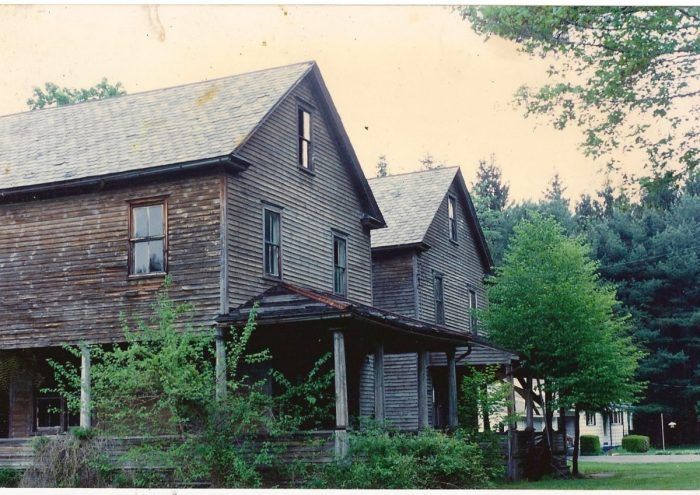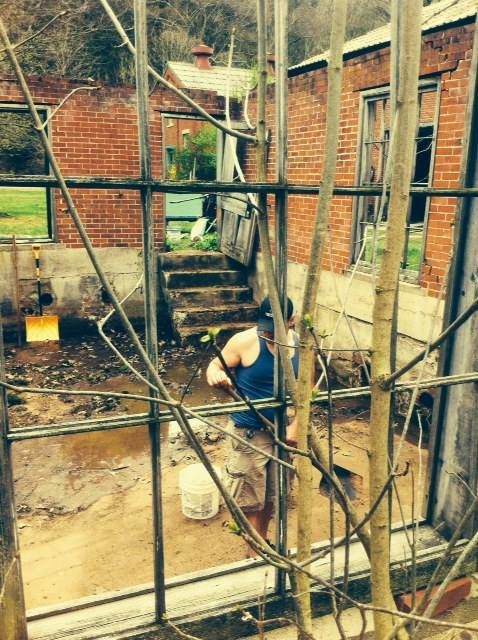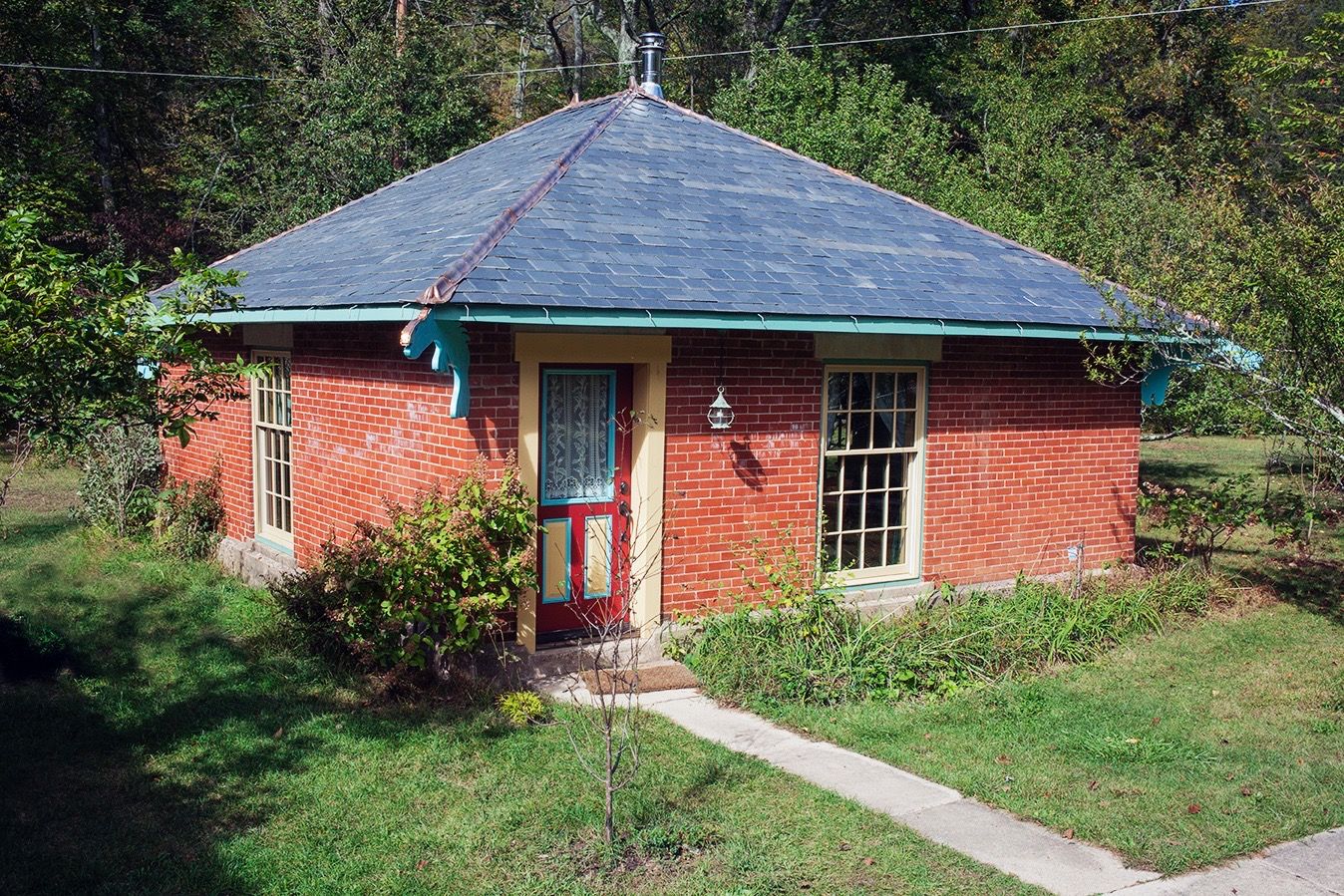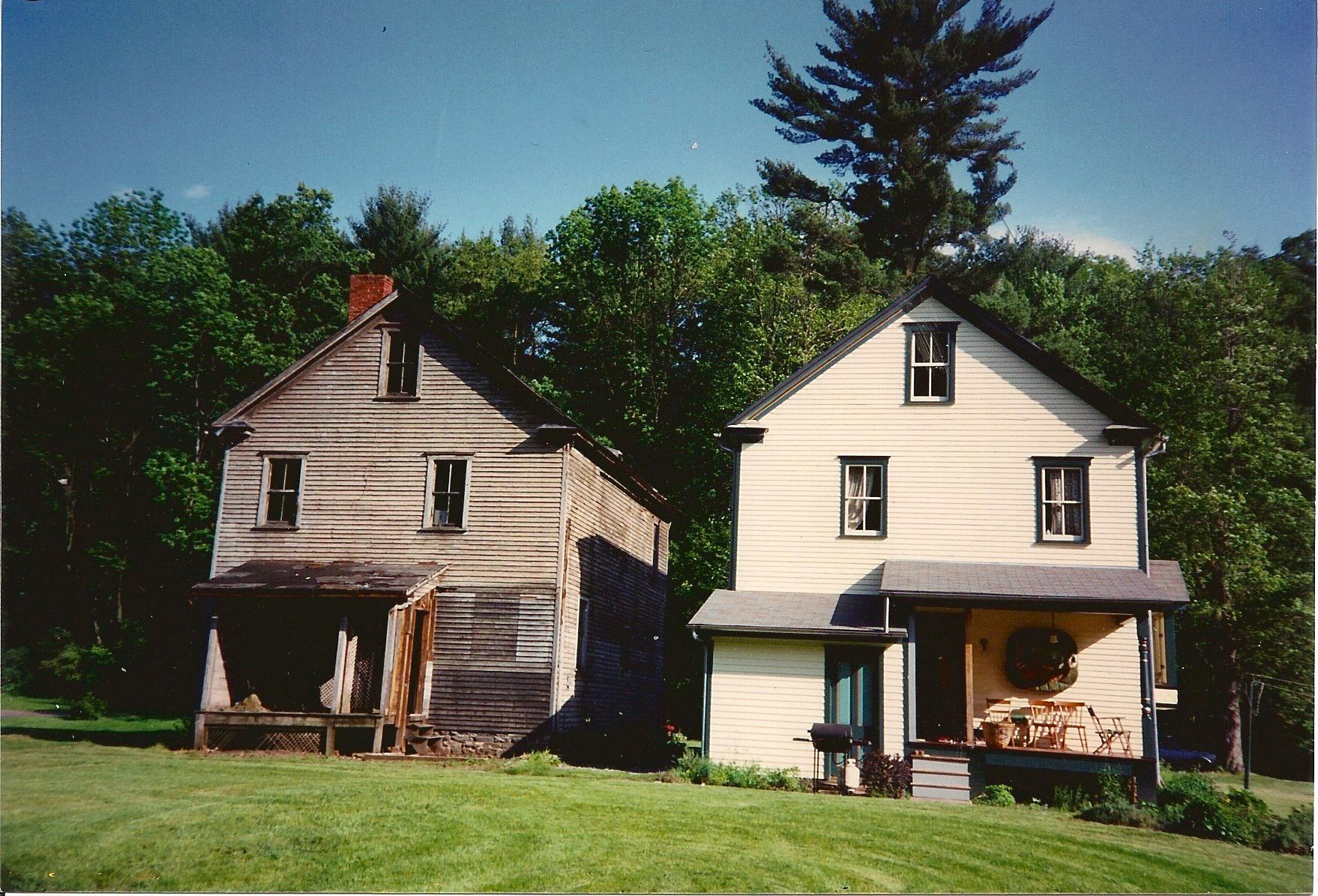Solar Energy Transforms PA Property

by Maia Baker
It is a daunting task to restore a derelict, abandoned and condemned house. Even more arduous is restoration followed by transformation: for example, Doug Hopkins’s historic property near Bloomsburg, Pennsylvania, the site of the first oil pipeline pumping station in the world, is now now one of the first entirely carbon-neutral businesses in its area, a dramatic and transformative change.
When Doug bought the property in 1989, he was faced with two 1,600-square-foot condemned arts and craft houses, two 3,000-square-foot brick pumping stations, a brick manifold house, and an oil tank – all in ruins and slated for demolition. By 1991, he had completely refurbished one of the foreman’s houses and moved in with his wife, Marika, and son, Hugh. Two decades later, he has converted the former blacksmith’s shop and telegraph office into two three-room suites, decorated with his own handmade tilework and stained glass. The other brick building now serves as his artist’s studio, similarly adorned with Doug’s own paintings and tiles. Today, the property is now visited by people from all over the world who gather to celebrate life’s happy milestones. Now known as the Pump House, the property has become the site of a second energy revolution, one in complete antithesis to its original use.
“All along I thought that the property should be made so that it could sustain itself,” Doug says. “Everything on the property has been built and designed for maximum efficiency, from the spray foam insulation to the mini-splits.” Doug believes that the first step to becoming energy-independent is to streamline energy use with high-efficiency appliances – and the second step is to generate all of the energy the property needs on the property itself.
Starting in July 2016, Doug had seventy solar panels installed on the roof of the pumping station – now called the Brick Barn – in an effort to eliminate the Pump House’s carbon footprint. “During the days with events, there’s still a lot of energy being used and we’re able to compensate for that using the panels,” Doug says.
Since the Pump House is far beyond a simple family home, it is even more important in the interests of the environment that it generate its own power and use that energy wisely. Despite the high upfront cost of the solar panels, their efficiency and sustainability – and the permanent lack of electricity bills that accompanies their installation – mean that ultimately they are much less expensive as well as much more eco-friendly than traditional energy sources.
“I think everybody has to become aware of where our energy comes from and the impact we have from the choices we make in the uses of energy,” Doug says. “We want to make people aware of the importance of utilizing resources to make better energy choices.” Through his energy-saving devices and the new solar panels which will generate all of the energy the Pump House needs to stay running, Doug is preserving the property and the environment for future generations – from restoration to innovation to transformation.


























